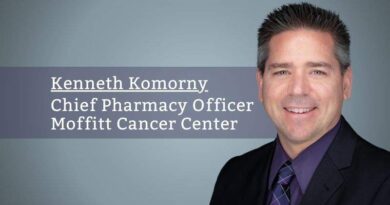Non-Traditional Route to Pharmacy Leadership
By Samir Jani, Director of Pharmacy Services, River Oaks Hospital & Clinics
“Lead by example” is one of the most widely known leadership styles adopted by leaders across industries. However, very few leaders effectively use it in their daily operations, worse yet; many leaders don’t even understand the true meaning of leading by example and thus struggle to do the job they are supposed to manage.
One of the most valuable lessons this pandemic has taught me is how to fill in for someone during a staffing crisis. If I am unable to do the job that I expect my staff to do, I would be doing an injustice to them if I had to lead them in any way. Staffing shortage is a true testimony of us leaders on how we can pivot, adapt and reevaluate our leadership style. It has allowed us to revisit our personal deficits on how we manage our staff, processes, and our policies like never before.
Why take on a leadership role?
This is one of the most challenging questions one must answer before taking on a leadership role. Leadership roles are rarely cookie-cutter positions with a traditional forty-hour work week. It takes time, dedication and around-the-clock commitment to serve such an impactful role. Everyone has their reasons as to why they want to be a leader. My reason was simple; to promote personal growth and inspire others along the way. I enjoy dealing with complex and challenging issues, getting out of my comfort zone and pushing myself to higher limits. I enjoy working with people, empowering them, and ultimately cultivating a culture that makes extraordinary contributions to patient care.
I have been fortunate to have a list of great bosses who have inspired me, motivated me and invested a lot of time in me to instill a sense of purpose in what I want to achieve in my career. I didn’t want to just become a leader; I wanted to become an effective leader that positivity impacts the employees and the organization as a whole. I learned very quickly that I have the knowledge, skills and ability to make the right decisions about myself and others. When all the puzzle came together, I knew I was ready to take on the leadership position. At the same time, I was very practical and realistic with myself; I knew I wouldn’t attain success immediately. I realized I would make some rookie mistakes along the way. However, I never doubted my ability to correct and learn from those mistakes. I keep at it, work through challenges every day and believe in myself that I know; eventually, I will get better at it.
Non-Traditional approach
I have seen many managers in my career who have transitioned directly from a classroom setting into a leadership role without ever working the bench. Don’t get me wrong; there is nothing wrong with that method. Many have turned out to be highly effective and are leading the department very successfully. However, I knew this route would not work for me. I needed hands-on experience and thus I started from the bottom, moved around in various settings, served on multiple different shifts and learned from a variety of highly experienced colleagues. I listened, observed, took notes, and absorbed as much as possible to get a deep understanding of the industry. So I created a timeline, set high goals and then made strategic career moves to set me up for success. This non-traditional approach worked for me and helped me tremendously in transitioning from staffing to a director role.
Making sure I “Walk the Walk”
Often leaders say one thing and do another, and then they ask their staff to do as they say, not as they do. When I took on a leadership role, I set clear expectations and promises to be true to my words through my actions. I never intended to take the easy way out or expected my staff to treat me any differently because of my position. Instead, I am committed to walk the hard walk and talk the hard talk to get the desired outcome. If I expect my staff to follow a set of rules, I am ready to follow them myself every time. When your employees see you truly lead by example, it builds a strong trust amongst the department which, in turn, increases employee satisfaction.
I have just talked about how powerful it is to lead your department with an example but what happens when you don’t follow what you preach? Employees get disengaged, creativity decreases, and productivity comes to a halt. Eventually, the job becomes a means to an end rather than an end to a means. When I feel a sense of disconnect between I and my staff, I reflect on my behavior, realign my focus and try again to regain their trust in my ability to lead them effectively. I love having a team that I can help guide and enjoy watching them grow to their full potential. My non-traditional route of becoming a leader in today’s world has been one of the most challenging yet, one of the most rewarding positions in my career.



